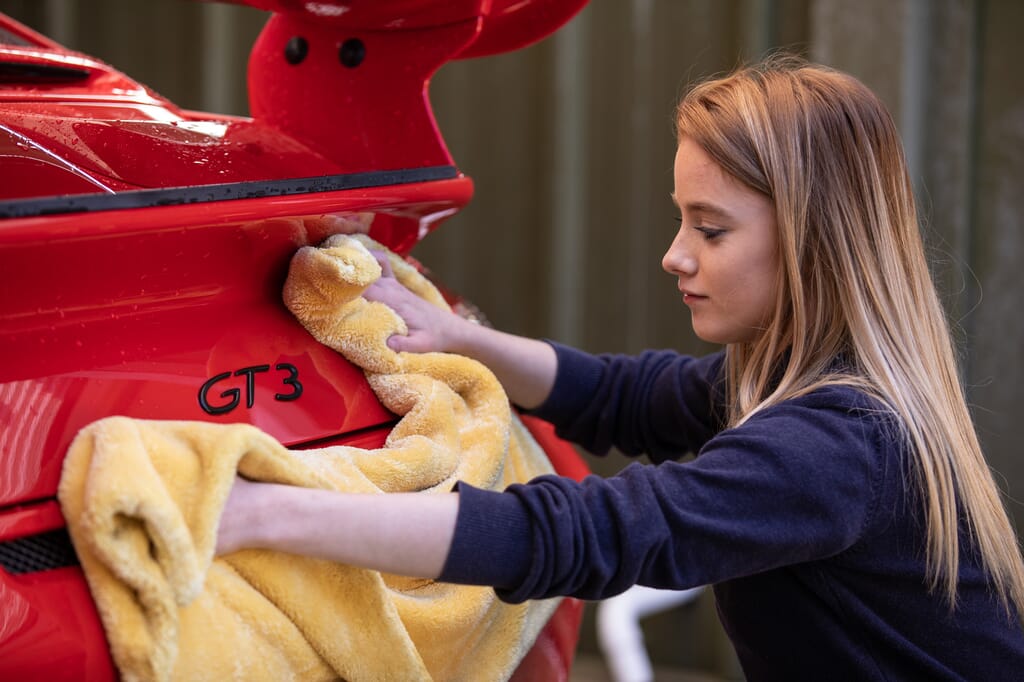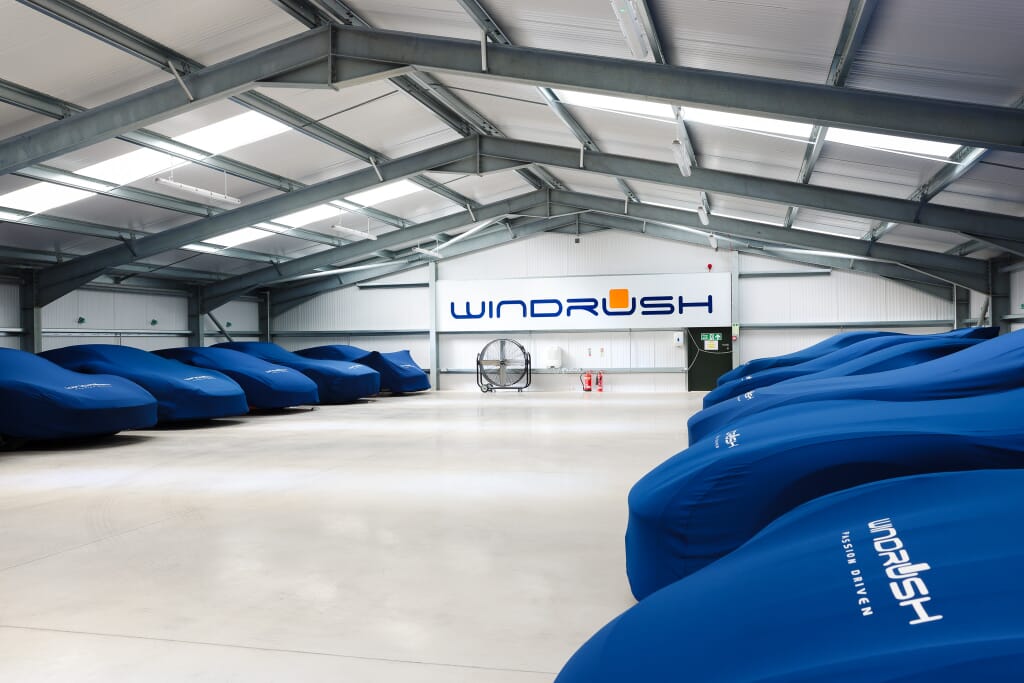
Once you have thoroughly washed your vehicle it is important to consider how to dry it in the correct manner.
Drying options:
- Allow the vehicle to air dry. Downside of this is that the finish can be poor due to smears and water spots left behind on the bodywork when in an area of hard water. To get around this water filters can be fitted to the water you use to rinse the vehicle with. Results of this method are usually pretty poor.
- Use a ‘rubber blade’ to remove excess water. This can be a fast way of removing excess water from a vehicle by ‘squeegeeing’, however very dangerous too. Any grit left on the paintwork post wash and rinse, can be dragged across the bodywork scratching it in the process. This can be avoided by rinsing the vehicle thoroughly post wash and then after each gentle ‘sweep’ of the blade, running the rubber blade between your finger and thumb to clean the working edge before placing back onto the bodywork. This drying method is not recommended due to the high risk of scratching.
- Leather dry. Either with a genuine leather chamois or with a modern man made synthetic alternatively. At Windrush Car Storage we have found that the synthetic type can hold more water and therefore produce a better finish than the more traditional natural leather chamois. Drawback of using leathers is that if not enough time has been spent thoroughly washing and rinsing the vehicle dirt and grit can me smeared across the vehicle body scratching the paintwork. Leathers can also become water laden very quickly and therefore require wringing out several times when drying even one vehicle.
- Microfibre dry. Many professional detailers will insist on using microfibre towels to ‘pat dry’ the bodywork. This can be time consuming. However it is very gentle to the paintwork and produces excellent results.
- Forced air dry. Not generally available for all due to the cost of the specialist equipment. A machine blows air through a nozzle (essentially reverse of a vacuum cleaner). Good results but can be slow and expensive to buy. Used by professional detailers.
The Windrush Car Storage recommended drying method:
At Windrush Car Storage we have found like most things it is usually the methods which take the longest which produce the best results. Our preferred drying method is by using specialist microfibre drying towels to pat dry the bodywork after thoroughly washing and rinsing a vehicle.
These specialist microfibre towels are soft, have an ultra-deep pile and are capable of absorbing many times their own weight in water. The large size of these towels mean that you can dry most cars without needing to wring it out even once. The ultra-soft fibres significantly reduce the risk of causing surface marring when the towel is drawn across painted surfaces. A feature of good quality drying towels is that they are seamless and tag-free, which further reduces the risk of marking the paint.
The Windrush drying method:
This is best done in a panel-by-panel basis to systematically dry the vehicle and produce excellent, streak free results.
Vehicle panel drying order (top down method):
- Roof
- Windows
- Mirrors
- Bonnet
- Boot
- Doors
- Bumpers
- Door-shuts
- Wheels
Now that the vehicle is dry you need to decide if that is enough for now or if you would like to go on and condition and nourish the vehicle.




